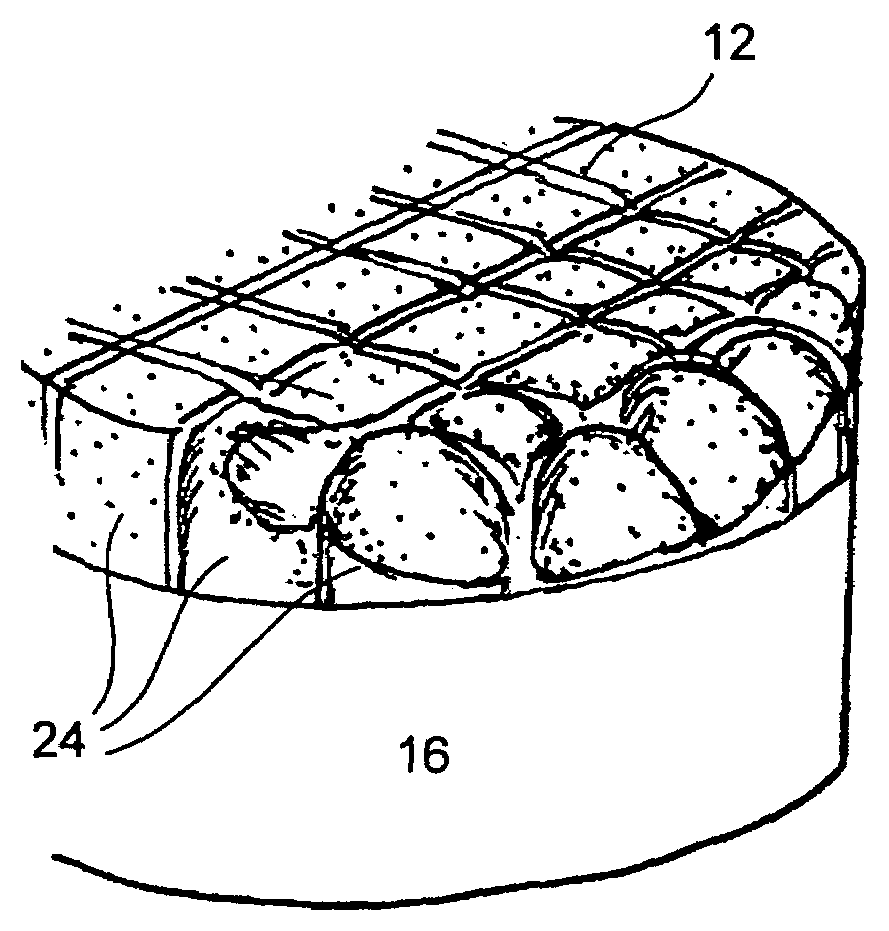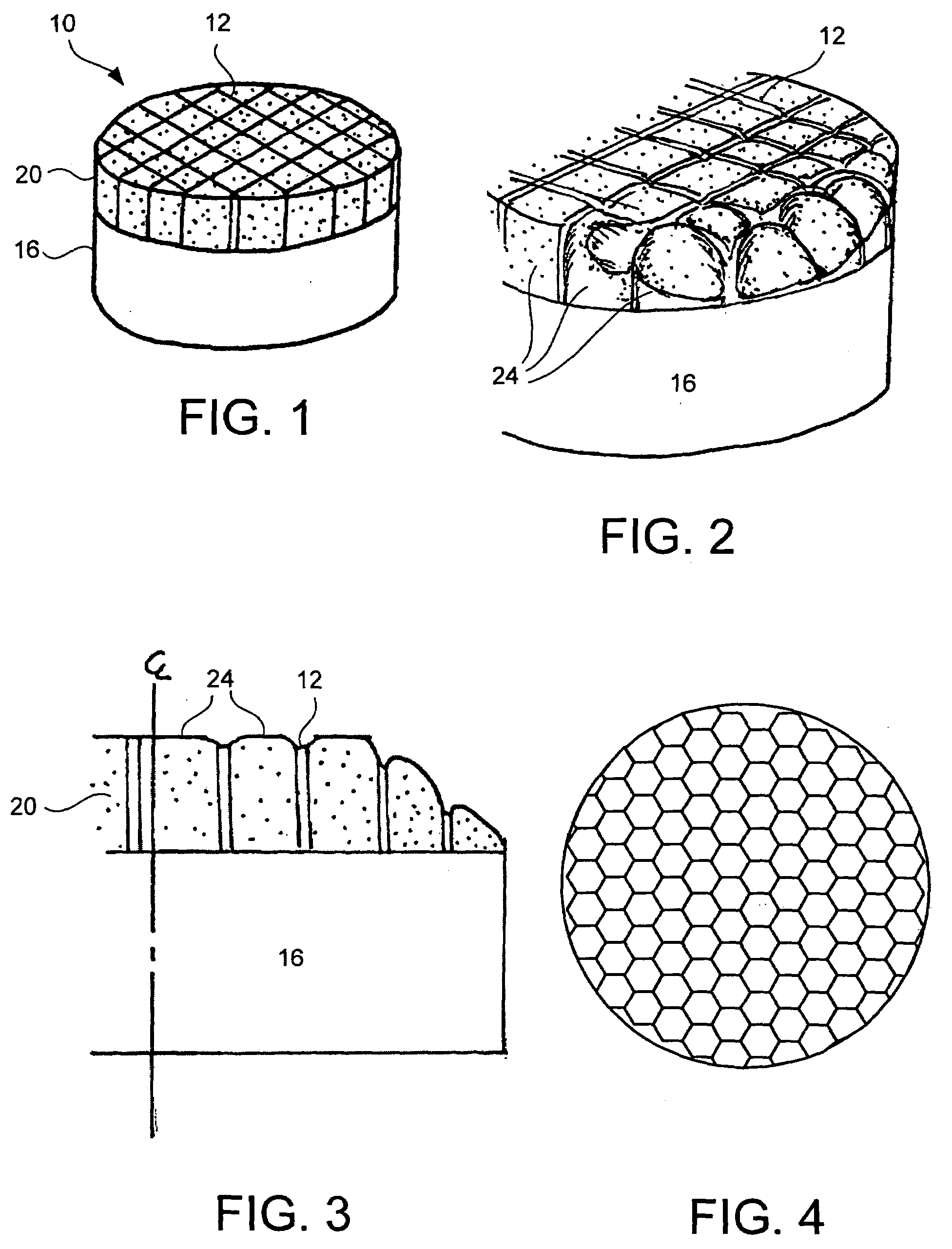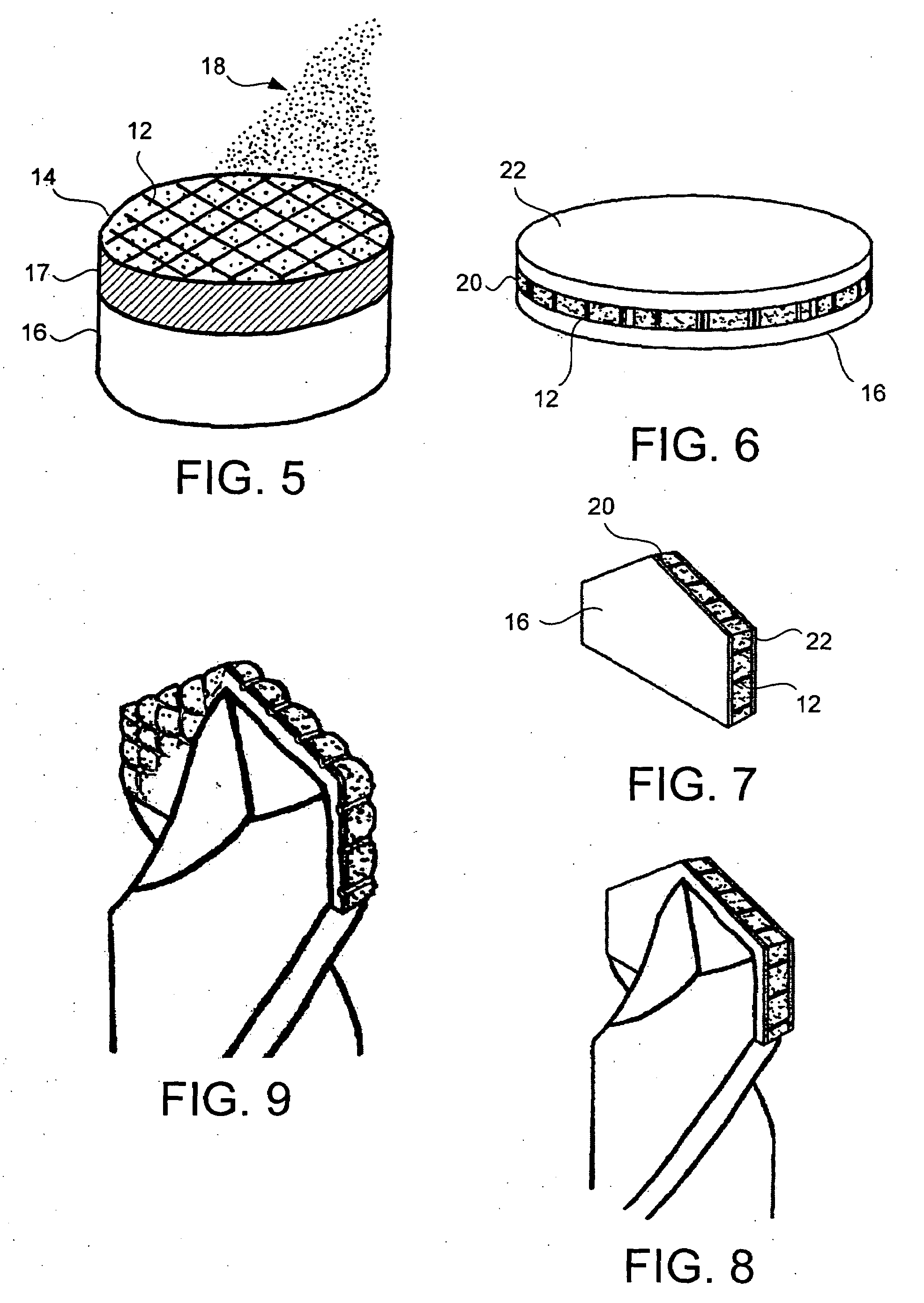Polycrystalline superabrasive composite tools and methods of forming the same
a technology of polycrystalline diamonds and composite tools, applied in the direction of twist drills, manufacturing tools, other chemical processes, etc., can solve the problems of increasing the technical difficulty of polycrystalline diamond composites, reducing the quality of sintered diamonds, and low toughness
- Summary
- Abstract
- Description
- Claims
- Application Information
AI Technical Summary
Benefits of technology
Problems solved by technology
Method used
Image
Examples
example 1
[0051]A cobalt cemented tungsten carbide substrate measuring 7.0 mm in thickness and 39.5 mm in diameter was pretreated by alcohol washing. A grid diffusion bridge matrix or individual square was formed from a nickel foil consisting essentially of 95 vol % nickel and 5 vol % cobalt. The grid had walls of 3.5 mm in height and square openings of 5.0 mm by 5.0 mm in size. The diffusion bridge was cut to the dimensions of the substrate and placed thereon. A mixture of 25 to 35 microns diamond powder was carefully filled to a thickness of 5.0 mm and the reaction cup-assembly was firmly compressed to consolidate the packed diamond as well as confirming the straightness of the cup-assembly. The PCD cell including this pressed reaction cup-assembly was then placed in a high pressure and high temperature hydraulic press at 1400° C. for about 30 minutes and was then allowed to cool to room temperature. The sintered PCD was finished by conventional grinding and lapping processes into a final P...
example 2
[0052]A cobalt cemented tungsten carbide substrate measuring 4.0 mm in thickness and 39.5 mm in diameter was pretreated by alcohol washing. A grid diffusion bridge matrix was welded using a 0.15 mm thick pure nickel foil. The grid design was a honeycomb rectangular form of 4 mm by 4 mm grid and a height of 3.5 mm. A diamond micron powder measuring 4 micron to 6 micron was prepared using a hydrogen firing at 900° C. for 2 hours. The cobalt cemented tungsten carbide substrate was inserted into a cleaned tantalum cup having an inner diameter of 40.0 mm to a thickness of about 9.0 mm. The grid diffusion bridge matrix was then placed on top of the substrate inside the tantalum cup. The diamond micron powder was poured over the diamond bridge matrix so that it measured about 2 mm to 3 mm beyond the top of the diamond bridge matrix to allow for compression and shrill under high pressure. A typical high pressure high temperature condition was applied at 1400° C. for about 25 minutes for sin...
example 3
[0053]The method of forming a similar polycrystalline superabrasive composite tool to Example 2 was repeated with a grid diffusion bridge matrix made with a 0.20 mm thick pure molybdenum foil and using different diamond powders. In this example, a bonding agent of tungsten carbide and silicon powder was mixed with 4 to 6 micron diamond powder. The weight ratio of feed mixture was 85% diamond and 15% bonding agent. The bonding agent itself was 97 wt % tungsten carbide powder (measuring about 1 to 2 micron) and 3 wt % silicon powder (measuring 1 micron). The metal grid, PCD configuration, and high pressure and high temperature conditions of Example 2 were applied. The appearance of the polycrystalline diamond composite tool from HPHT sintering was similar to that in Example 2. However, the PCD composite tool of the present example was characterized by a more thermally stable PCD layer than the one of Example 2 due to more stable carbide formers but less cobalt sintering aids in the di...
PUM
| Property | Measurement | Unit |
|---|---|---|
| Fraction | aaaaa | aaaaa |
| Fraction | aaaaa | aaaaa |
| Thickness | aaaaa | aaaaa |
Abstract
Description
Claims
Application Information
 Login to View More
Login to View More - R&D
- Intellectual Property
- Life Sciences
- Materials
- Tech Scout
- Unparalleled Data Quality
- Higher Quality Content
- 60% Fewer Hallucinations
Browse by: Latest US Patents, China's latest patents, Technical Efficacy Thesaurus, Application Domain, Technology Topic, Popular Technical Reports.
© 2025 PatSnap. All rights reserved.Legal|Privacy policy|Modern Slavery Act Transparency Statement|Sitemap|About US| Contact US: help@patsnap.com



